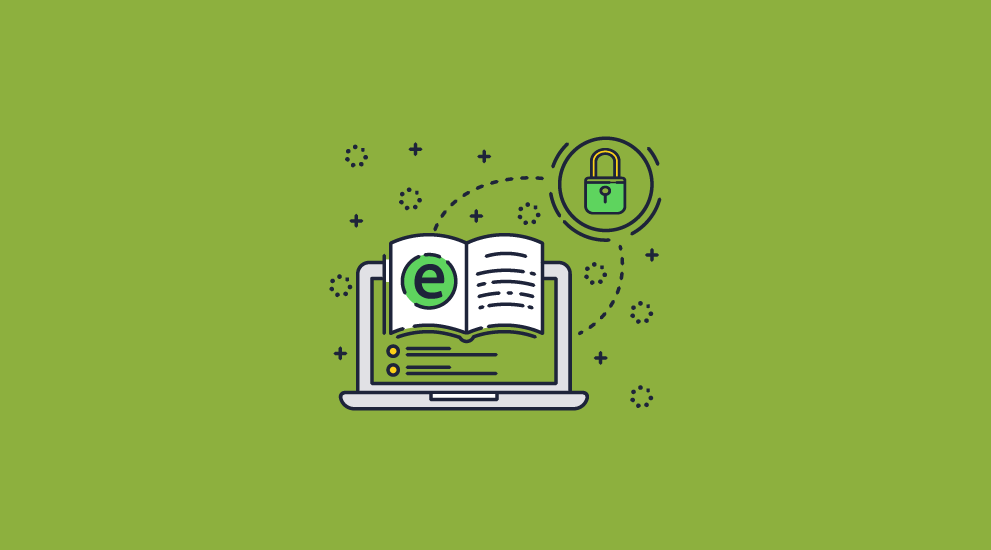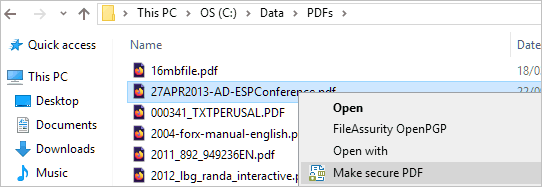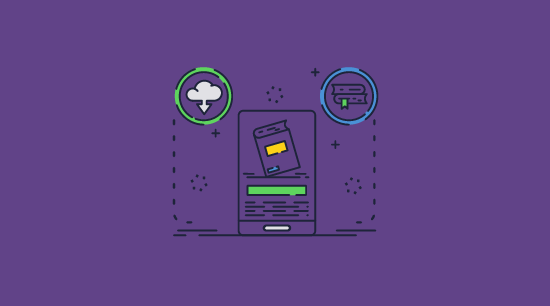No Passwords
No passwords or 2FA codes for users to enter, forget or share, or for you to manage and distribute.
Keys are automatically, transparently, and securely transferred to authorized devices and locked to them.

Ebook security is a method of copy protection applied to digital books to prevent users from sharing and distributing ebooks with others.
It can use many different security technologies including encryption, watermarking with the user’s email address, and access controls. Often, it is implemented by using proprietary file formats.
 Free 15 Day Trial
Free 15 Day Trial | Securing Ebooks with Safeguard PDF security |

 How to secure a PDF ebook with DRM protection
How to secure a PDF ebook with DRM protectionUsing Locklizard to secure ebooks is quick and simple.
Admins protect a PDF file using Safeguard Writer and then add their intended recipients as users in their admin portal. The system will automatically send them an email with the license file and a link to the Safeguard Reader application required to open the ebook. The protected e-book can then be delivered however you like, as only authorized users can open it.

Creating a protected PDF file

Encrypting a PDF book without passwords using Safeguard PDF DRM

Safeguard Admin System
For a more detailed look at the process, you can read our full guide on how to add security to a PDF.
 Security features & options to secure e-books
Security features & options to secure e-booksSafeguard provides multiple security options to secure your ebooks:

 DID YOU KNOW?
DID YOU KNOW?“We have been looking for years to find a software company that would allow us to securely sell our eBooks. Locklizard offers so many options, we are able to fill the needs of all of our customers. We have used other software providers that had promised the security of our eBooks but they never lived up to that promise the way that Locklizard has.
The support we received has been outstanding. They are very responsive to our requests and go the extra mile.
I would recommend Locklizard if you are looking for secure ebooks.”
 | Digital Publishing: Preventing ebook copying, sharing & distribution |

If you are publishing or lending an ebook rather than a physical book, it is much easier for someone else to copy it. The most practical security feature of a physical book is the difficulty of making an acceptable copy. It is significantly cheaper to buy another copy than to attempt a high-quality photocopy, particularly if you believe that time is money. And at the end of it all, a photocopy is a complete pain to read.
But an ebook is a different story. Copying an ebook for redistribution is a whole other ball game from copying a paperback or a hardback book. The very creation of the ebook format, within the necessary limitations of the technology used to make ebooks, introduced issues at a scale never before seen by physical print books. Suddenly, books could not just be copied 1:1, but done so trivially and infinitely at no cost. And so ebook security became a core requirement for both publishers and library digital lending.
 How does ebook security software work?
How does ebook security software work?
Ebook security software relies upon encryption (scrambling information so that only those with the correct key can return it to its original form) to prevent users from accessing content. In addition, DRM controls can be added to control how ebooks are used by authorized users – for example preventing copying and printing. Some companies provide social DRM but in reality, this provides little protection.
 What does ebook security need to succeed?
What does ebook security need to succeed?
Access to content encryption must be strictly controlled if it is going to be effective. Where password systems are used, the passwords can be too easily shared between users, effectively syndicating an ebook that is sent to one person to a whole community.
Even registration codes can be misused. They are just long passwords, and in some systems, valid code generators can be acquired from the internet. So, if you are going to apply ebook security, you need a cryptographic system where the user is not involved in generating or entering passwords so that the ability to crack the encryption system is significantly reduced, if not completely prevented.
Ebook security must also be comprehensive if it is to be effective. It has to prevent not just the easy copying of the file content, but also printing, or at least high-quality prints. Some ebooks are talking versions, so screen copying is not a very practical way to compromize their security, and others can contain video sections as well as static pictures and text. So, a thorough approach is required if it is to be successful. In practice, that means having different options available to provide ebook security so that it will fit the specific requirements of the media.
 | Why Locklizard for Ebook Security? |
Locklizard takes your e-book security seriously. Sell ebooks securely without insecure passwords or plug-ins, and enforce access, location, expiry, and usage controls. Our DRM technology ensures your ebooks remain safe regardless of their location with US Gov Strength encryption, licensing, and DRM controls. Ebook content is decrypted in memory and no temporary files are used.
 | Epub vs PDF for ebooks |

The format (or indeed formats) you publish your ebook in is not a decision to be taken lightly. It will affect everything from compatibility across devices to the platforms you can publish on, content layout, and security.
We want to make it clear that despite offering eBook security software for PDF files only, Locklizard does not believe that everybody should publish in the PDF format. There are some legitimate advantages to the epub and mobi formats, including:
 Epub and Mobi security
Epub and Mobi securityFrom a security perspective, epub and mobi ebooks are at a major disadvantage. The common use of PDFs in the enterprise has led to a much more robust security ecosystem. Unlike epub or mobi, it supports DRM that cannot be easily bypassed or removed and even has rudimentary password and certificate protection as part of its core feature set. However, there are other reasons you might choose PDF:
Ultimately, there are some legitimate reasons to choose epub, mobi, or azw over PDF, but it is clear that security is not one of them. PDF is the natural choice if preventing unauthorized sharing, editing, and use of your books is a top priority, particularly if you can pair it with a PDF DRM solution such as Locklizard.
 Download ebook software to secure e-books
Download ebook software to secure e-books
Download ebook security software with DRM controls that protects ebooks published in PDF format and does not rely on passwords for security.
Through the use of US Government strength encryption (AES) and digital rights management controls, you prevent unauthorized use and misuse of your ebooks and control can view them, what they can do with them (copy, print, etc.) and when they can no longer be viewed (expire).
Read our customer testimonials and case studies to see why thousands of organizations use Locklizard PDF security to securely sell ebooks, prevent piracy & theft, and increase their revenue streams. Ebook DRM security made simple.